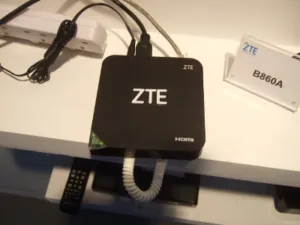Comments made to us by ZTE echoed those of Kaon Media (TVs Will Not Replace STBs, Says Kaon). Both companies feel that set-top boxes will not be replaced by connected TVs any time soon, for the same reasons (upgradeability and a curated experience). ZTE added that TV vendors are always focused on their current flagship product, so support for operators is actually much shorter-lived than would be expected.
STB manufacturers produce new units at a fast pace, but many of them – like ZTE – sell white-box goods to operators, not consumers, so support is a vital part of their service offering. On the other hand, consumers are TV vendors’ end market, and companies focus on pushing ‘the next big thing’ to their audience. This means that – according to ZTE – firmware bugs affecting operators can go unfixed for months.
Another argument made against smart TVs was the possibility of failure. ZTE said that service disruptions are just as likely to be caused by a smart TV as the operator, but consumers will “automatically” blame the operator. In the case of an STB, this makes sense, as the operator owns both hardware and software; but when it comes to a TV, it is more difficult to track the problem down.
As well as discussing boxes, ZTE was showing one new model: the B860A. This is an Android 5.0 IPTV and OTT unit, supporting resolutions up to DCI-4k and using the HEVC codec. It has been in use by China Telecom since last December. It has a 2GHz quad-core Cortex-A9 CPU and octa-core Mali 450 GPU.

